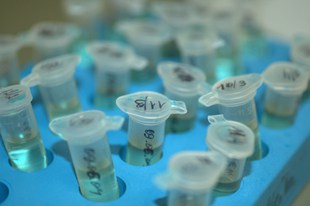IGFBP-3 (Insulin-Like Growth Factor Binding Protein 3) Testing Fact Sheet
Overview of the Test
Insulin-like growth factor binding protein 3 (IGFBP-3) acts as a biological marker (or biomarker) for levels of human growth hormone (GH) in the blood. Lower levels of IGFBP-3 often suggest a growth hormone deficiency or growth hormone resistance.
Evidence and Science behind the Test
IGFBP-3 levels increase through childhood to maximum levels in puberty before declining during adulthood.
IGFBP-3 plays an important role in binding insulin-like growth factor 1 (IGF-1) and IGF-2 to their receptors and both of these are essential for normal growth and development. Like low levels of IGF-1, low levels of IGFBP-3 can cause short stature and delayed growth in children. Low levels of IGFBP-3 can also indicate pituitary or hypothalamic tumours. Levels of IGFBP-3 also decline in the body when calorie or protein intake is restricted, which means that an IGFBP-3 test can help assess nutritional status.
Increased levels of IGFBP-3 suggest an overproduction of growth hormone or in cases where individuals are receiving GH therapy, a dose that is too high. Measuring IGFBP-3 can help to discriminate between growth hormone deficiencies and short stature that may occur through other causes.
How is it done?
IGFBP-3 testing often takes place alongside IGF-1 testing, as this appears to offer a higher accuracy for diagnosing growth hormone deficiency or resistance. A small blood sample is drawn from the arm and sent for laboratory testing.
Who Does It?
Doctors, nurses and other qualified professionals.
When and How Often?
Cost
IGFBP-3 tests are available for around $100 upwards. Insurance may cover the some or all of the test costs.
Issues
The results range for IGFBP-3 testing are highly age-specific and so results should always be analysed within an age context, as well as other test findings and clinical information. Individuals who have autoimmune disorders, or are in regular contact with human or animal serum products can have altered results.
References
- Granada ML, Murillo J, Lucas A, et al: Diagnostic efficiency of serum IGF-1, IGF-binding protein-3 (IGFBP-3), IGF/IGFBP-3 molar ratio and urinary GH measurements in the diagnosis of adult GH deficiency: importance of an appropriate reference population. Eur J Endocrinol 2000;142:243-253
- Boquete HR, Sobrado PGV, Fideleff HL, et al: Evaluation of diagnostic accuracy of insulin-like growth factor (IGF)-1 and IGF-binding protein-3 in growth hormone-deficient children and adults using ROC plot analysis. J Endocrinol Metab 2003;88:4702-4708
- Interpretive Handbook – Insulin-Like Growth Factor Binding Protein 3 (IGFBP-3), Serum: http://www.mayomedicallaboratories.com/interpretive-guide/index.html?alpha=I&unit_code=83300
Last reviewed 26/Feb/2014







